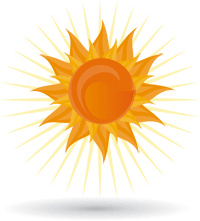Krista Harding
Southwind District Horticulture Agent K-State Research and Extension Office
So far, this fall has brought fairly favorable weather—but winter is just around the corner. Before the deep freeze sets in, there are two important tasks every homeowner should check off their lawn care list: weed control and fall fertilization.
Why worry about lawn weeds now?
Weeds might be the last thing on your mind this time of year. But think back to last spring—was your lawn speckled with purple henbit or dotted with dandelions? If so, those weeds didn’t just show up in spring—they actually started growing last fall.
Cool-season broadleaf weeds like henbit, dandelions, and chickweed germinate in the cool, moist conditions of September and October. They overwinter as small, low-growing plants that often go unnoticed. Once spring temperatures rise, they rapidly grow and bloom, making them much harder to control.
Fall is the best time for broadleaf weed control Treating these weeds in the fall is your best chance for effective control. During this season, the weeds are actively transporting nutrients to their roots in preparation for winter. Herbicides applied now are carried down to the roots, killing the plant from the inside out. Plus, the young, small weeds are much more vulnerable to herbicide treatments.
Look for broadleaf herbicides that contain 2,4-D, or combination products with 2,4-D, MCPP, and Dicamba—commonly sold under names such as Trimec, Weed-B-Gon, or Weed-Out. Another effective option is Weed Free Zone, which includes all of the above ingredients plus carfentrazone for enhanced control.
Important Note: Avoid applying herbicides to newly seeded lawns until the grass has been mowed at least two or three times. Always read and follow the label instructions carefully.
Fall applications also reduce the risk of herbicide drift, a common issue during warm, windy spring days. The cooler, calmer conditions of fall—along with the dormant state of many plants—make this an ideal time for treatment.
Don’t Forget Fertilization
Early November is the perfect time to apply the final dose of nitrogen fertilizer to your cool-season lawn. This late-season application can make a big difference come spring.
Why? As temperatures drop, top growth slows, but grass plants continue producing and storing carbohydrates in their crowns and roots. These stored reserves help your lawn green up earlier and grow more vigorously in the spring—often eliminating the need for early spring fertilizer.
Apply 1 to 1½ pounds of actual nitrogen per 1,000 square feet. Use a quick-release nitrogen source like urea or ammonium sulfate for best results.
Krista Harding is a K-State Research and Extension Horticulture agent assigned to Southwind District. She may be reached at [email protected] or 620-244-3826.






